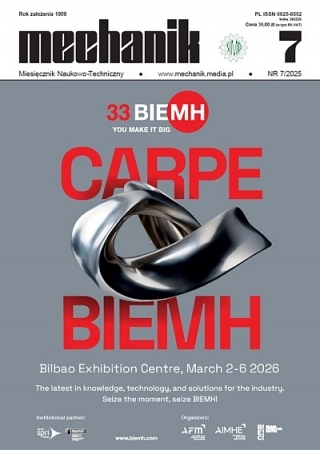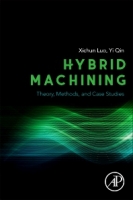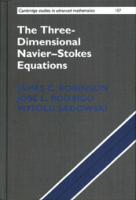Significance of terrain-based haptic feedback for motion platform accuracy in firefighting vehicle simulation
Znaczenie haptycznego sprzężenia zwrotnego opartego na profilu terenu dla dokładności platformy ruchu w symulatorze pojazdu strażackiego *
Author: Paweł Lisiecki, Maciej Szłapczyński
Mechanik nr 05/06/2025 - Nowe technologie
ABSTRACT: This study explores the integration of terrain-based haptic feedback in a fire truck driving simulator to improve training realism and efficiency. A wide range of terrain conditions–including slopes, mud, and uneven surfaces–was simulated and dynamically mapped to a 6DOF motion platform. The system reproduces realistic vehicle dynamics and terrain-induced forces, enhancing driver immersion and decision-making in extreme conditions. Compared to previous research, the simulator offers greater fidelity and scenario diversity, supporting faster skill acquisition and better operational readiness for real-world emergencies.
KEYWORDS: driving simulator, fire truck simulator, haptic feedback, simulators
STRESZCZENIE: W artykule przedstawiono podejście do zwiększenia realizmu i skuteczności szkoleń kierowców pojazdów straży pożarnej poprzez zastosowanie haptyki opartej na profilu terenu. Symulacje obejmowały różnorodne warunki terenowe, takie jak strome podjazdy, błoto czy wyboje, które odwzorowywane były na platformie ruchomej o sześciu stopniach swobody. System umożliwia realistyczne odwzorowanie dynamiki pojazdu oraz sił wynikających z ukształtowania terenu, co poprawia immersję i wspiera podejmowanie decyzji w warunkach ekstremalnych.
SŁOWA KLUCZOWE: symulator jazdy, symulator pojazdu strażackiego, sprzężenie zwrotne haptyczne, symulatory.
BIBLIOGRAFIA / BIBLIOGRAPHY:
[1] Barbosa, L. et al.: Multisensory virtual environment for firefighter training simulation: Study of the [1] Barbosa, L., et al. “Multisensory Virtual Environment for Firefighter Training Simulation: Study of the Impact of Haptic Feedback on Task Execution.” EPCGI 2017 - 24th Encontro Português de Computação Gráfica e Interação, 2017, pp. 1–7.
[2] Bouyer, G., et al. “Inducing Self-Motion Sensations in Driving Simulators Using Force-Feedback and Haptic Motion.” Proceedings of IEEE Virtual Reality (VR), 2017, pp. 84–90.
[3] Bruck, L., et al. “A Review of Driving Simulation Technology and Applications.” IEEE Open Journal of Vehicular Technology, vol. 2, 2021, pp. 1–16.
[4] Damian, M., et al. “Experimental Validation of Torque-Based Control for Realistic Handwheel Haptics in Driving Simulators.” IEEE Transactions on Vehicular Technology, vol. 71, no. 1, 2022, pp. 196–209.
[5] Lelevé, A., et al. “Haptic Training Simulation.” Frontiers in Virtual Reality, vol. 1, no. 3, 2020, article 543795.
[6] Mohellebi, H., et al. “Adaptive Haptic Feedback Steering Wheel for Driving Simulators.” IEEE Transactions on Vehicular Technology, vol. 58, no. 4, 2009, pp. 1654–1666.
[7] Nagai, T., et al. “Dual-Driver Networked Fire Truck Simulator with Multimodal Display Including Force Feedback Steering and Rotating Motion Platform.” Proceedings of the IEEE International Workshops on Enabling Technologies: Infrastructure for Collaborative Enterprises (WETICE), 2007, pp. 424–429.
[8] Petermeijer, S. M., et al. “The Effect of Haptic Support Systems on Driver Performance: A Literature Survey.” IEEE Transactions on Haptics, vol. 8, no. 4, 2015, pp. 467–479.
DOI: https://doi.org/10.17814/mechanik.2025.5-6.5
* Artykuł recenzowany




















